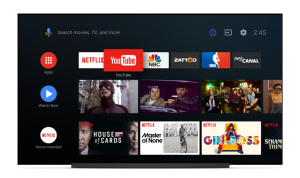Android Camera Innovations Going Viral Worldwide sets the stage for this enthralling narrative, showcasing how advancements in smartphone camera technology are capturing the attention of users and enthusiasts alike. From cutting-edge image processing algorithms to revolutionary features that enhance user experience, the journey of these innovations reveals a fascinating interplay between creativity and technology. As smartphones become an essential part of our daily lives, understanding these developments gives us insight into how we capture and share our moments.
The rapid evolution of Android camera capabilities is driven by both consumer demand and technological advancements. Recent innovations include improved low-light performance, AI-based enhancements for better portrait modes, and the integration of multiple lenses to offer diverse shooting options. As we explore these features, it’s clear that the push for better photography experiences is not just a trend—it’s an essential part of how we communicate and express ourselves in today’s digital landscape.
In the ever-evolving landscape of technology, few innovations have made as significant an impact on our daily lives as the internet. The internet has transformed the way we communicate, access information, and conduct business. It has enabled global connectivity and opened up new avenues for collaboration and creativity. In this article, we will explore the various facets of the internet, its history, its current state, and its future prospects.To appreciate the significance of the internet, it’s essential to delve into its history.

The journey began in the 1960s with ARPANET, a project funded by the U.S. Department of Defense. It aimed to create a network that could withstand a nuclear attack by distributing information across multiple nodes. This project laid the groundwork for what would eventually become the modern internet. By the 1980s, the adoption of TCP/IP protocols standardized communication between different networks, paving the way for widespread connectivity.As we moved into the 1990s, the internet began to gain traction with the advent of the World Wide Web.
Tim Berners-Lee, a British computer scientist, introduced the concept of hypertext, allowing users to navigate between web pages using links. This breakthrough made the internet more accessible to the general public, and soon thereafter, the first web browsers emerged, further facilitating user interaction. The dot-com boom of the late 1990s saw a surge in internet-based businesses, leading to significant economic growth but also culminating in the infamous dot-com bubble burst.Fast forward to the 2000s and beyond, the internet has grown exponentially.
Today, billions of people worldwide have access to the internet, engaging in activities ranging from social networking to online shopping. The rise of smartphones has further integrated the internet into our daily lives. Mobile applications allow us to stay connected, access information on-the-go, and manage various aspects of our lives from the palm of our hand.Social media platforms have revolutionized the way we communicate with one another.
Platforms like Facebook, Twitter, Instagram, and LinkedIn have created new opportunities for individuals and businesses to connect and share information. These platforms have also given rise to influencers and content creators who have leveraged their online presence to build brands and engage with large audiences. However, the rise of social media has also brought challenges, such as the spread of misinformation, privacy concerns, and the impact on mental health.In addition to social media, e-commerce has transformed the retail landscape.
Consumers can now shop online for virtually anything, with the convenience of home delivery. Retail giants like Amazon have set the standard for online shopping, offering a vast selection of products and competitive pricing. The COVID-19 pandemic further accelerated this shift, forcing many brick-and-mortar businesses to adapt to an online model to survive.Moreover, the internet has revolutionized how we access and consume information.
The traditional media landscape has been disrupted by online news outlets, blogs, and video-sharing platforms. People can now access news and entertainment from various sources, often with a simple click. This democratization of information has empowered individuals but has also led to the challenge of discerning credible sources from unreliable ones.The rise of streaming services like Netflix and Spotify has changed how we consume media.
No longer tied to traditional cable subscriptions or physical media, consumers can now access a vast library of content at their convenience. This shift has influenced the entertainment industry, leading to new content creation strategies and changing audience expectations.As we look to the future of the internet, several trends and developments are poised to shape its evolution. One of the most significant advancements is the transition towards a decentralized internet, often referred to as Web 3.0.
This new paradigm aims to give users more control over their data and reduce the dominance of large tech companies. Blockchain technology, which powers cryptocurrencies, is a key component of this vision, enabling secure and transparent transactions without intermediaries.Additionally, the rise of artificial intelligence (AI) and machine learning is set to enhance our online experiences. AI-driven algorithms can personalize content recommendations, improve search results, and streamline customer service through chatbots.
However, the integration of AI also raises ethical concerns regarding data privacy and the potential for biased algorithms.Cybersecurity remains a critical issue as more devices connect to the internet. The Internet of Things (IoT) has introduced a myriad of connected devices, from smart home gadgets to industrial machinery. While IoT offers incredible convenience and efficiency, it also presents vulnerabilities that can be exploited by cybercriminals.
As a result, the need for robust cybersecurity measures has never been more pressing.Furthermore, the digital divide persists, highlighting the disparity in internet access between different populations. While urban areas often enjoy high-speed internet, rural and underserved communities may lack reliable connectivity. Addressing this gap is essential for ensuring that everyone can benefit from the opportunities the internet provides.In conclusion, the internet has fundamentally transformed our lives, shaping the way we communicate, shop, access information, and entertain ourselves.
As we continue to navigate this digital landscape, it’s crucial to remain aware of the challenges and opportunities that arise. From the historical roots of the internet to the innovations on the horizon, understanding its evolution can help us better prepare for a future where connectivity is an integral part of our daily existence.
FAQs: Android Camera Innovations Going Viral Worldwide
What are some recent innovations in Android cameras?
Recent innovations include AI enhancements, improved low-light capabilities, and multi-lens setups for varied photographic styles.
How do these innovations impact user experience?
These innovations provide users with more creative options, better image quality, and increased convenience when capturing moments.
Are Android cameras competing with professional cameras?
While professional cameras offer superior quality, advancements in Android cameras are narrowing the gap, making them more viable for everyday photography.
What role does social media play in the popularity of these innovations?
Social media platforms drive the popularity of Android camera features as users share high-quality images, fostering trends and inspiring others to explore these technologies.
Will future developments focus more on hardware or software improvements?
Future developments are likely to focus on both hardware and software improvements to enhance overall camera performance and user experience.













